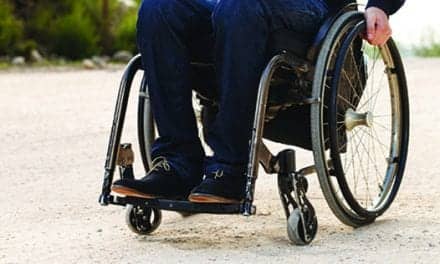Think you’re too young to have a stroke? Think again, according to new research at Washington University School of Medicine in St Louis published in the September/October 2009 issue of the American Journal of Occupational Therapy, says a statement released by the American Occupational Therapy Association (AOTA), Bethesda, Md.
Some 45% of the 7,740 study patients who had been hospitalized at Barnes-Jewish Hospital with a diagnosis of stroke were less than 65 years old, and nearly 27% were less than 55. Compare this to the statistic provided by the National Institutes of Health: two-thirds (66%) of all strokes occur in people older than 65.
Timothy J. Wolf, OTD, MSCI, OTR/L, instructor of occupational therapy and neurology, and investigator for the Cognitive Rehabilitation Research Group (CRRG) at Washington University, said in the statement that “the needs of a younger person with stroke go far beyond those of the older population. This includes family issues, work, driving, marriage responsibilities and community participation. US rehabilitation programs are not organized to serve these needs. In fact, this study demonstrated that many of these people get minimal or no services after stroke."
Study patients who had a mild to moderate stroke—approximately 82%—were usually discharged directly home (71%), discharged with home services only, or discharged with outpatient services only.
Wolf said further that "these services have limited focus on work rehabilitation and community integration. Based on a follow-up assessment, people with mild or moderate strokes were not successfully integrating back into their everyday lives.”
Specifically, 46% reported working slower, 42% reported not being able to do the job as well, 31% reported not being able to keep organized, and 52% reported not being able to concentrate.
“In the current medical climate, people who have had mild to moderate strokes are discharged with minimal to no services in large part because stroke scales by the National Institutes of Health do not identify all of the deficits that will affect participation after a stroke,” Wolf said in the statement.
Susan H. Lin, ScD, OTR/L, director of research at AOTA, says this study indicates health care professionals as a whole need to be educated about the role occupational therapy plays in the rehabilitation of people with stroke. “Occupational therapy practitioners focus on the whole person to address the return to full participation in work, family, and community life. Physicians and other health care professionals need to recognize this and address potential gaps by referring patients to occupational therapy services, which will help them live life to its fullest,” Lin said in the statement.
Click here for more information about the role of occupational therapy intervention for individuals who have had a stroke.
Authors: Along with Wolf, study authors from the Washington University School of Medicine were Carolyn Baum, PhD, OTR/L, FAOTA, a professor of occupational therapy and neurology; Elias Michael director of the program in occupational therapy and principal investigator for the Cognitive Rehabilitation Study: Age at Time of Stroke Decreasing Research Group; and Lisa Tabor Connor, PhD, assistant professor of occupational therapy, radiology, and neurology and clinical core principal investigator for the Cognitive Rehabilitation Research Group.
Reference: American Journal of Occupational Therapy, Vol. 63, No. 5.
Also, see the feature in RMs June 2009 issue: Coping With Stroke: Rehabbing the trauma that can affect all ages.
[Source: AOTA]




